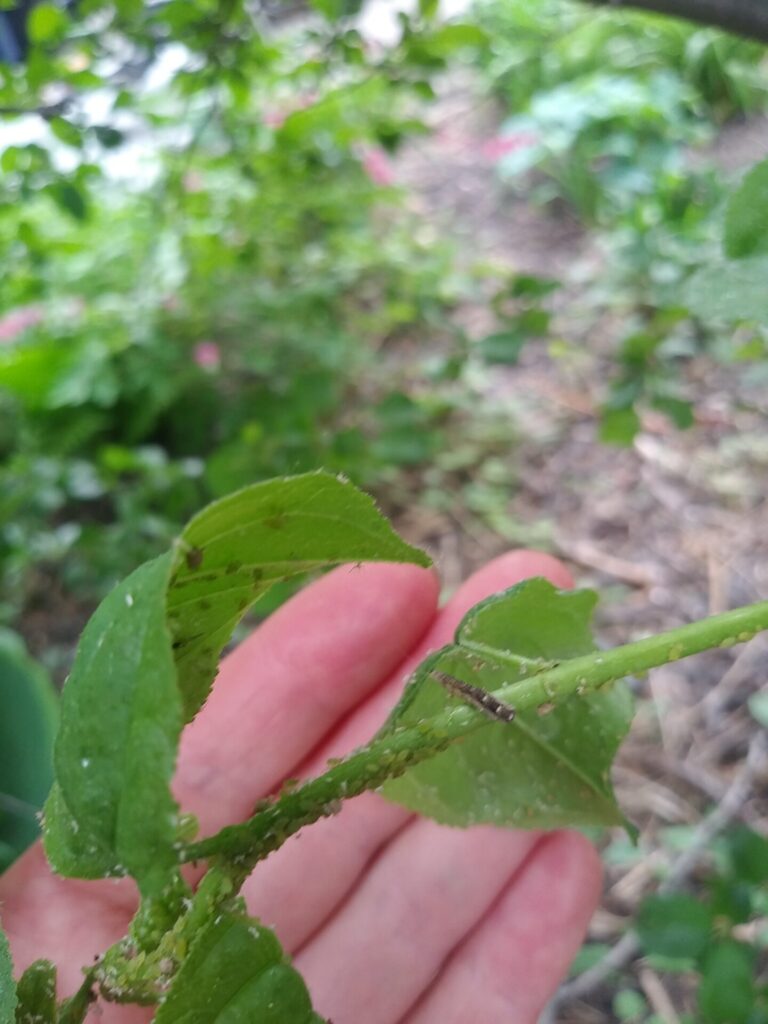
Hello, I recently noticed tiny orange eggs smaller than a poppy seed (by which l mean the kind we eat in banned goods) all over a young Birch tree (I think it’s a Birch, l didn’t plant it). The next week, which is today, l see what l think are green aphids everywhere. I also today see tiny caterpillars about a 1-2cm long. The leaves are covered in sticky sap. Should l be concerned? The tree appears infested
Thank-you for consulting Toronto Master Gardeners with your question.
The green aphids you are seeing are very common with birch trees. In fact, a number of different aphids feast on the plant tissue of birches. They exude a sticky substance known as “honeydew”. This substance is not harmful in itself, but it tends to lead to the development of a black fungus, “sooty mold” which is harmful to the tree. The dark spots in your photo might be sooty mold. Some information about aphids can be found at the following link:
https://www.canada.ca/en/health-canada/services/pest-control-tips/aphids.html
The best “treatment” for aphids is prevention by ensuring a healthy tree. Birches require a moist soil, though not waterlogged. Drought will lead to poor health and poor resistance to pest and diseases. Partial shade rather than a sunny location can help to avoid drought.
Lady beetles, lacewings and syrphid flies are major predators of aphids and I hoped that your caterpillars might be one of those insects in its larva form. After looking into it, I do not think your caterpillar is one of those beneficial insects. It is possible that it is a very young, small gypsy moth caterpillar. Ontario has been infested with these over that last couple of years, and they do prefer to eat the leaves of oak and birch. I cannot make a positive identification from your photo. If they are gypsy moth caterpillars, they will grow to several times that size. An effective control for these caterpillars if the infestation is small, is to wrap the trunk with a rough fabric such as burlap (I have used a scrap of landscape cloth with good results). Each day, as the caterpillars move up and down the trunk (they move to the cooler ground during the heat of the day), they become trapped in the cloth and can be picked off and destroyed.
Here is a link to some additional information from the Halton Master Gardeners on caterpillars in Ontario:
https://haltonmastergardeners.com/2020/06/05/whats_that_caterpillar/
If you do find that you have a gypsy moth infestation, you should also check out the following link to the City of Toronto site:
Best of luck!

